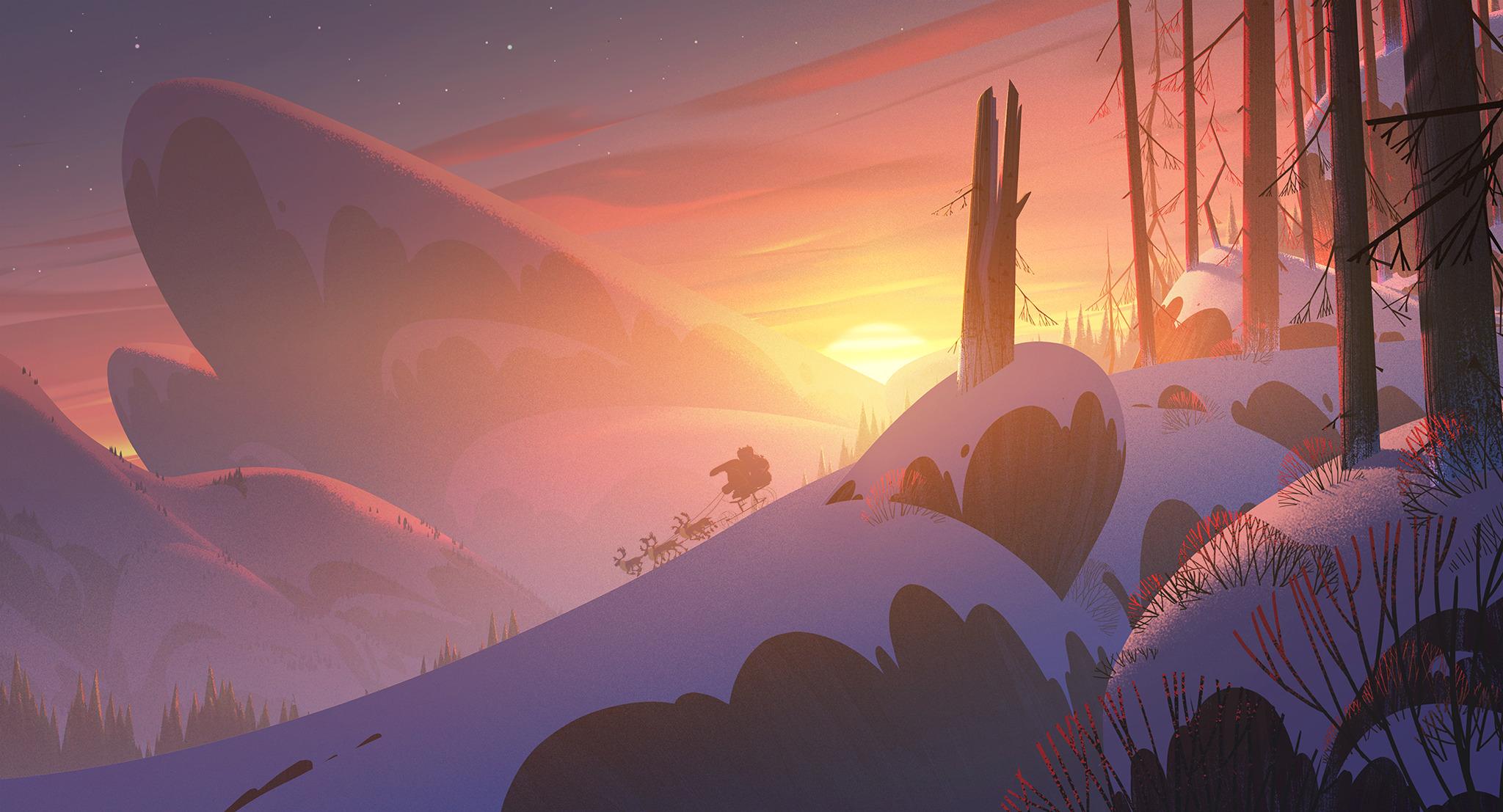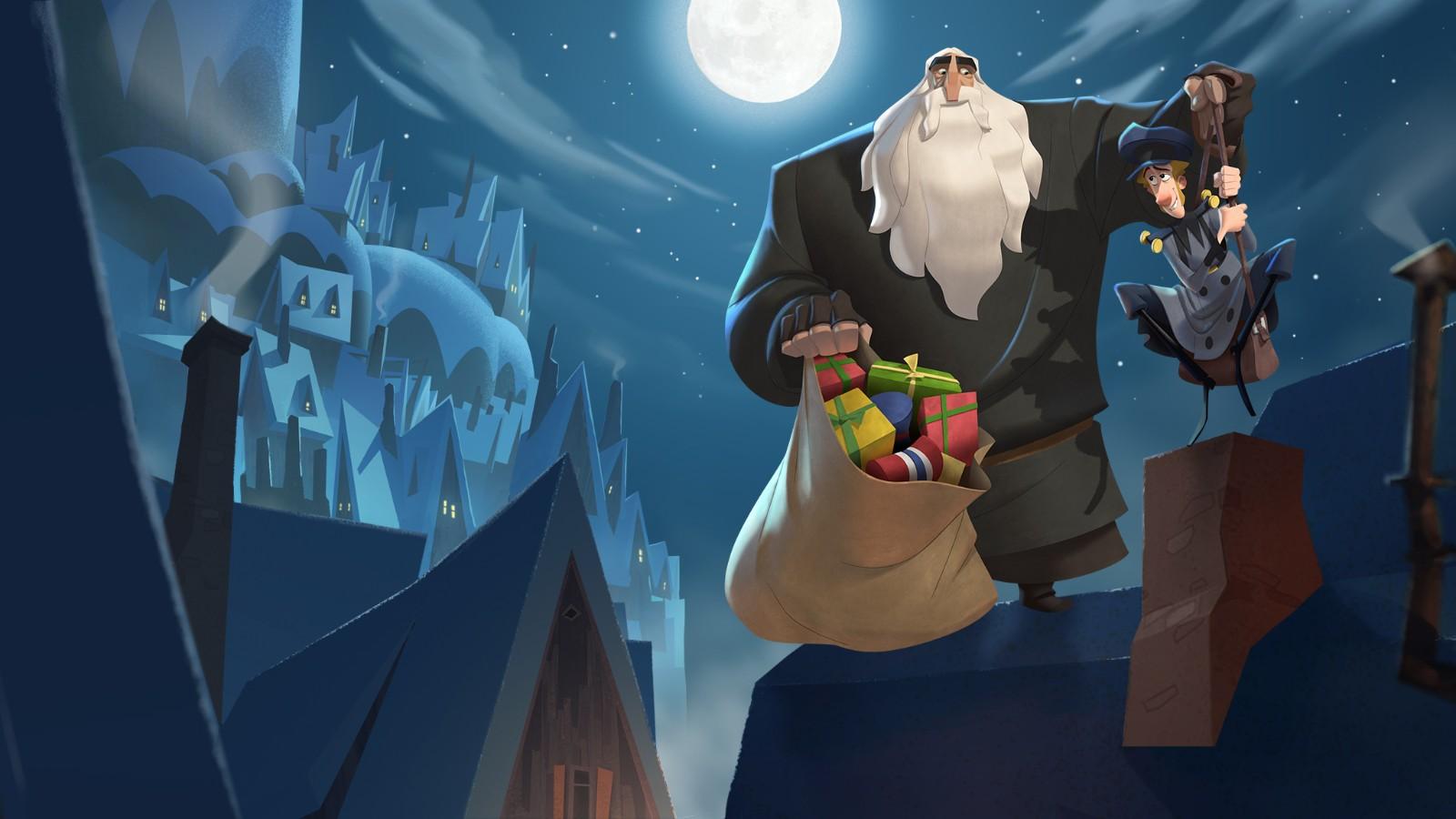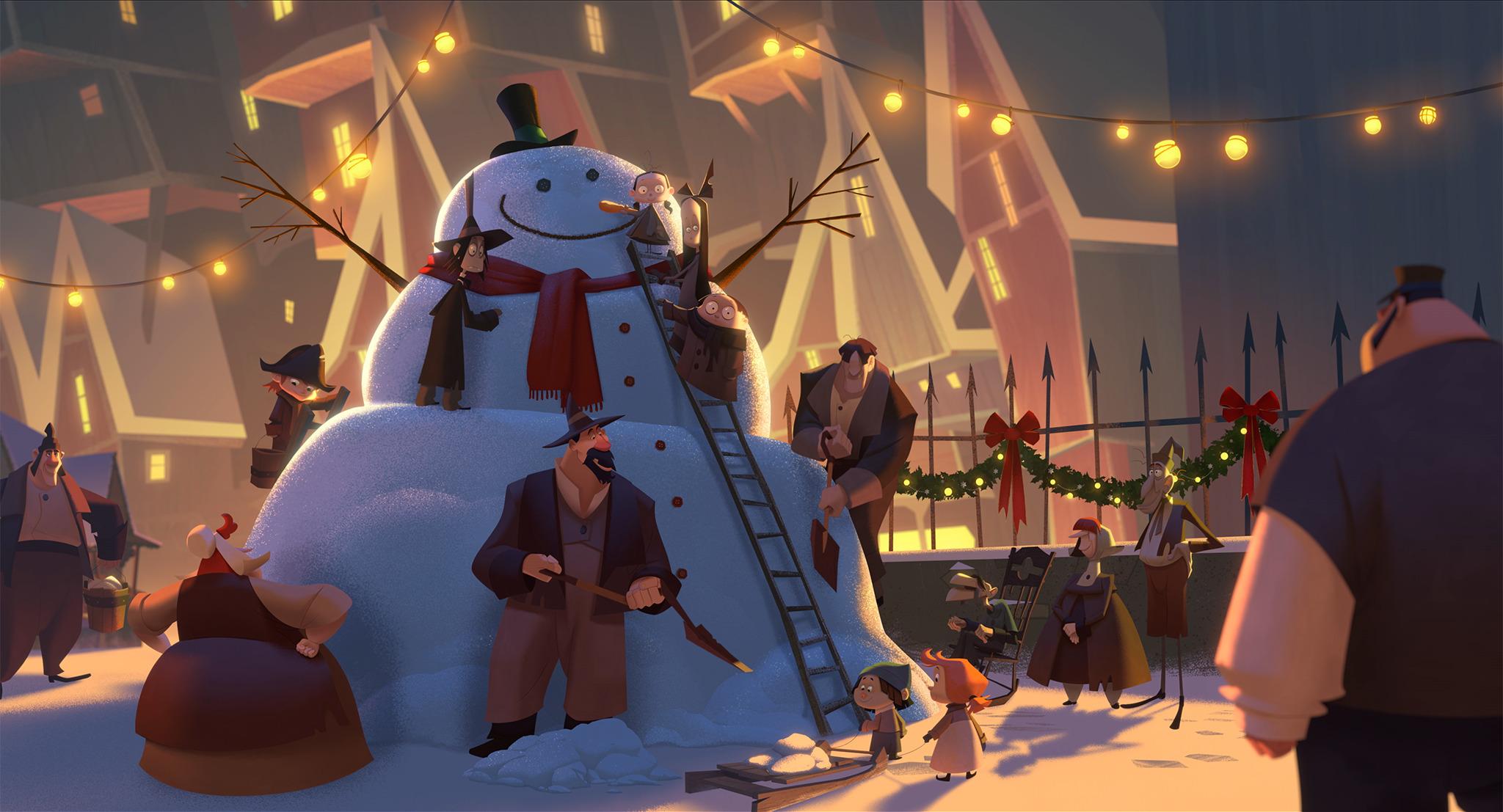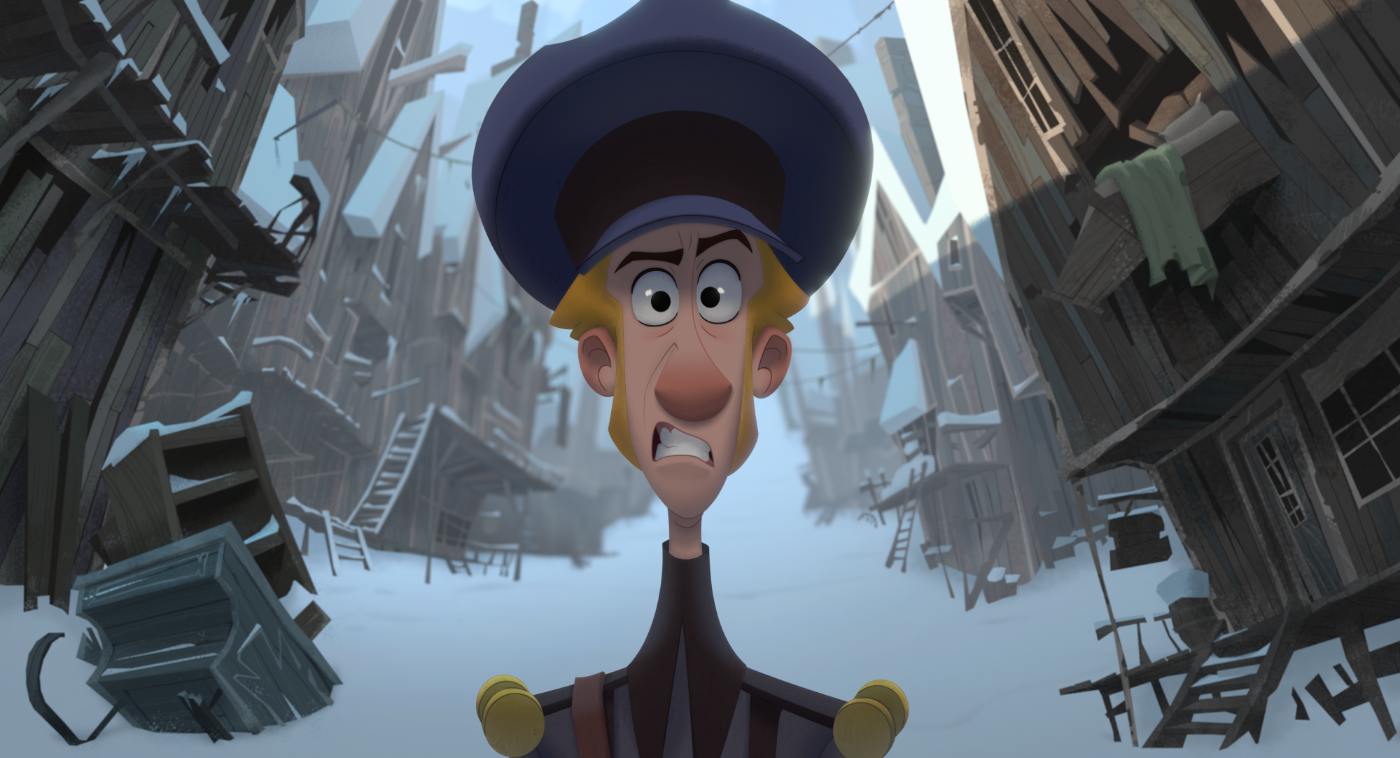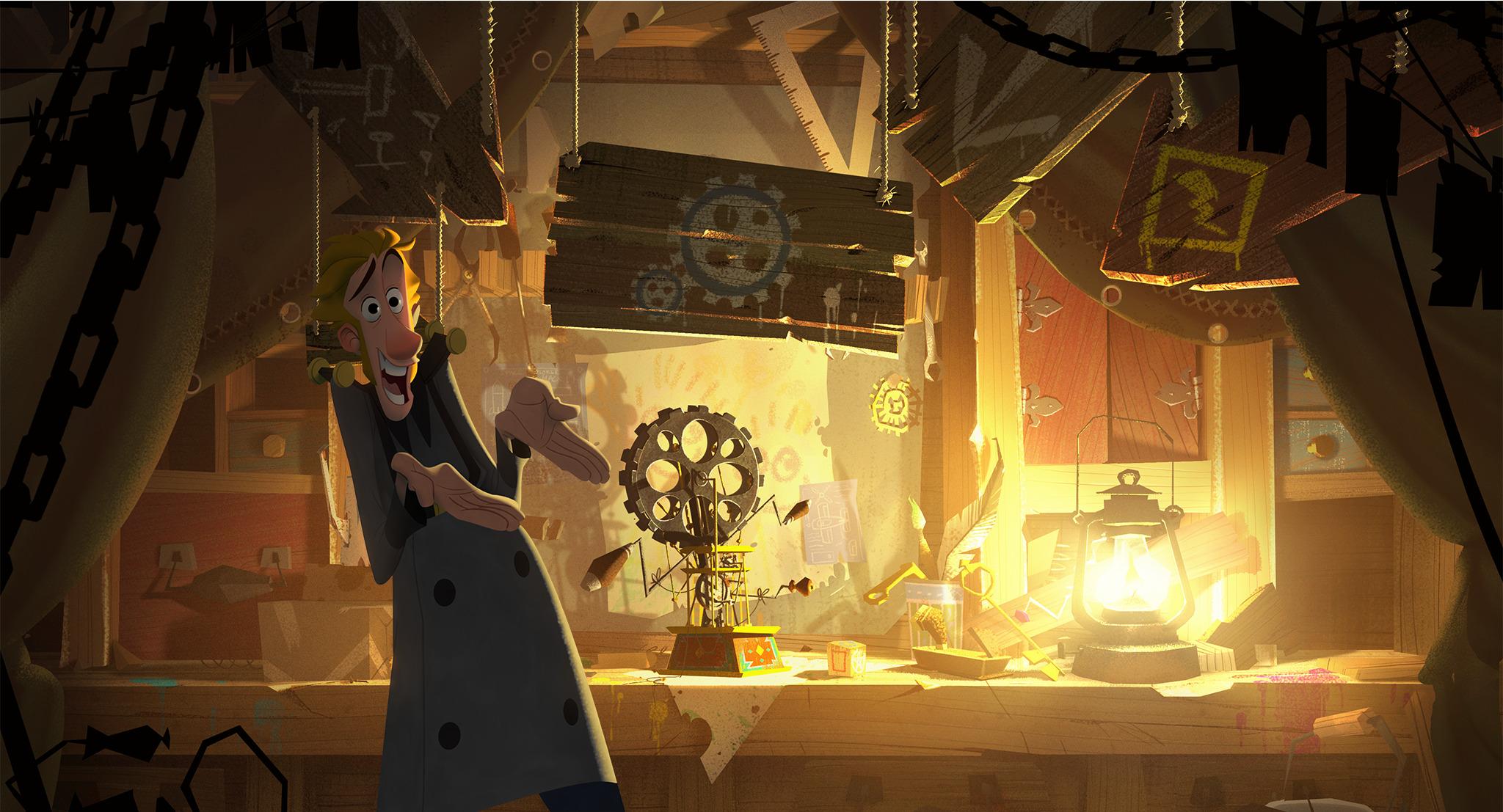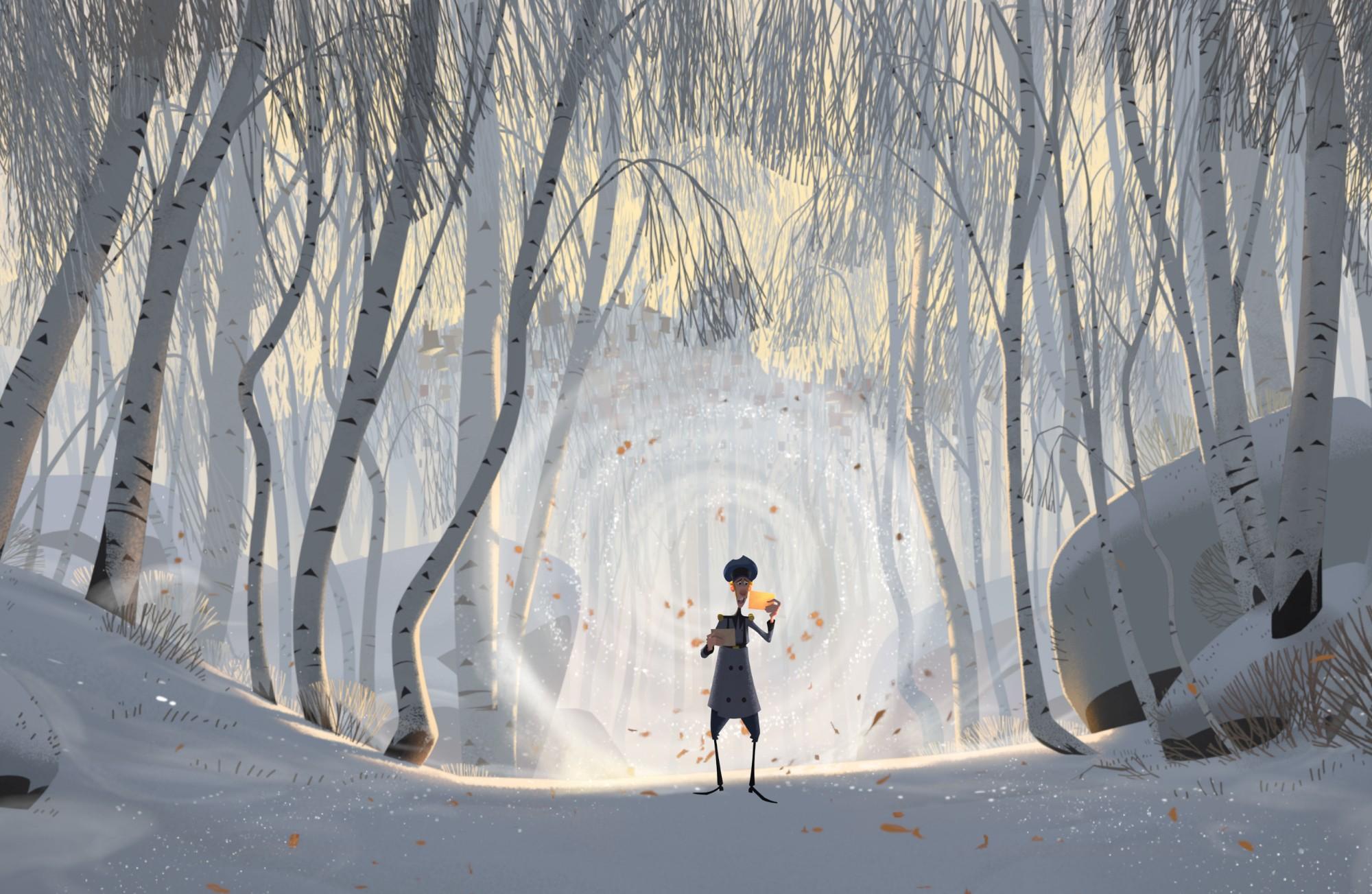While traditional animation is still used in smaller projects throughout the world and by studios based in Europe and Japan, large-scale Western films have not used hand-drawn animation since the ‘90s. As a result, 2D animation tools have barely evolved over the last twenty to thirty years.
The team at SPA knew they wanted to change this before the story for Klaus was conceived and spent a lot of time thinking about the limitations of hand-drawn animation.
If you look closely at any hand-drawn animated feature, you’ll notice the backgrounds are beautifully painted while the characters are flat and stylistically incongruent. “The innovation was focused mainly on how to integrate characters into the World seamlessly,” says Sergio Pablos. “And that—we discovered—had a lot to do with how we used light and texture.”




